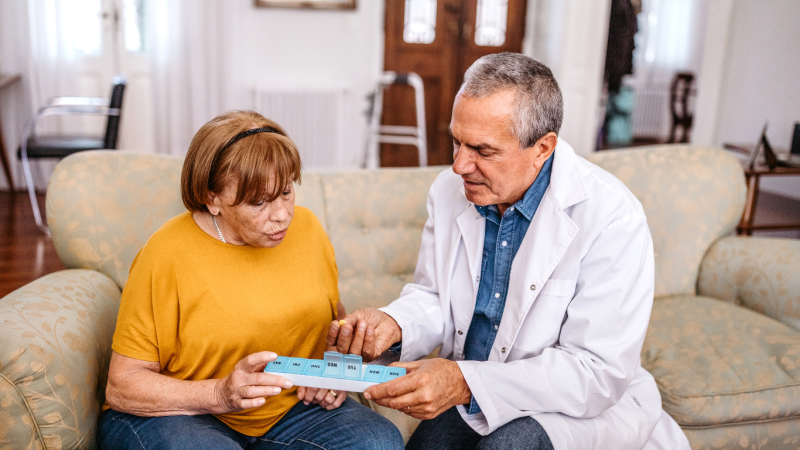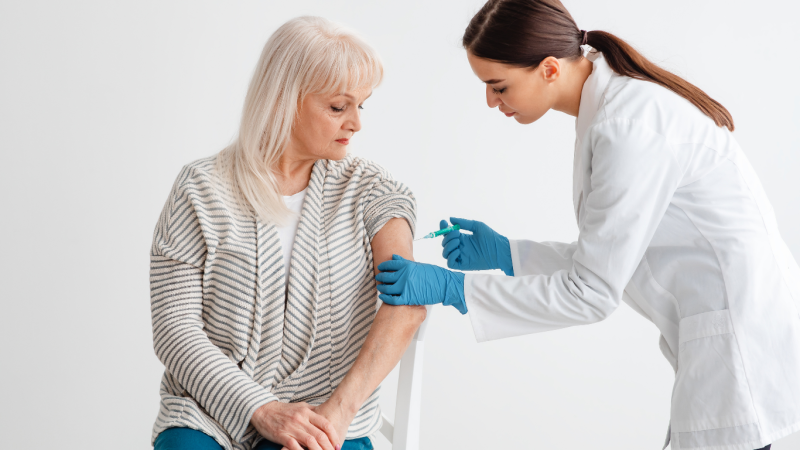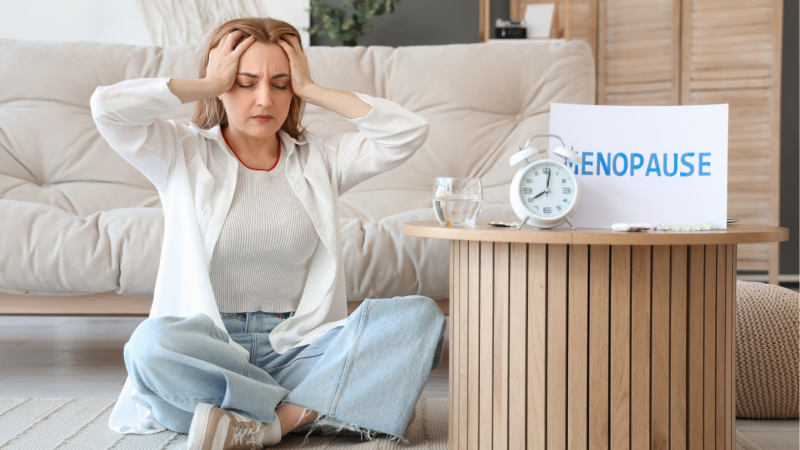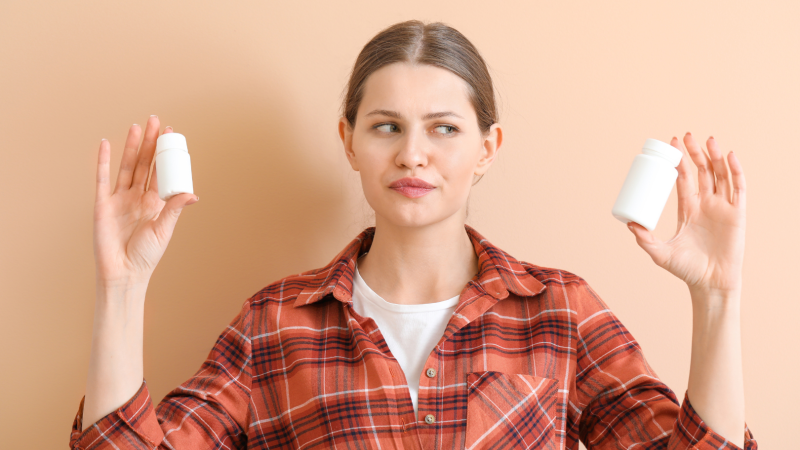
How NAD Gave My Dog Six More Months Of Health, Happiness, And Life

Those of us who choose to lead a healthy lifestyle are keenly aware that diet, exercise, supplementation, quality sleep, and stress management are key components on our path.
Those of us who are pet owners also want our pets to enjoy the same good health and long life that we envision for ourselves.
I’d like to share my Romeo the Red toy poodle’s senior year NAD supplementation story…
… so that others’ dogs may benefit from what I learned as I faced health challenges for Romeo.
There’s a saying that I read months after Romeo passed and it touched me deeply: “A dog might only be there for part of your life, but to them, you are their entire life ”
Wow! That one floored me.
For us, a dog might be one aspect of a busy life filled with work, family, and countless other commitments. But to our dogs, we are everything—their world revolves around us, and their loyalty, love, and devotion are unwavering.
Nowhere is this more evident than every time we return home to an excited, loving greeting from our loyal companion, who has waited patiently for our return.
The jumping, the tail wags, the unbridled excitement that we are “back” is a constant reminder that we are loved and missed, even for short periods of time.
Dogs teach us the true meaning of unconditional love.
They don’t care about our flaws or mistakes; to them, we are perfect. This kind of love is rare, and it’s why the bond we share with our dogs is so special.
They remind us to live in the moment, to appreciate the simple joys of life, and to always greet the people we love with enthusiasm and warmth. In return for their boundless love, we owe them our time, attention, and care—because while they may be just a part of our lives, we are their whole world.
Perhaps the most important role in our dog’s life is that of steward of their health.
We decide what they are going to eat, where they will go, and upon which bed or floor they will sleep. It is on us to make sure their lives are safe, comfy, and secure.
Their very lifespan, for the most part, is in our hands. Ensuring that our pet lives as many years as possible before the Rainbow Bridge crossing becomes a challenge that we take seriously once conditions dictate that we recognize that we will live on but our furbaby will not.

My red toy poodle Romeo finally began, at about age 12, to show his first symptom of aging.
I say “began” because up until that point, people often mistook him for a puppy.
However, this day when he went outdoors for his midday walk, he took a few steps and then just stopped. He began to flinch and jerk backward, reacting to “something.”
I pulled gently on his leash, but he just stood there, his head jerking side to side rapidly, as though he was in pain.
He continued to back away, not proceeding forward, clearly in distress. I assumed he was having some sort of seizure. I’d had a Yorkie named Missy who lived to 17 ½.
In Missy’s last years, she became epileptic and seizures were a common occurrence. This was new for Romeo and scary for both of us.
I picked him up off the pavement and jumped into my car, racing him to the doggie ER nearby.
Those of you who have endured a dog healthcare emergency of any sort know well the anguish, fear, and stress that send your heartbeat racing and cortisol levels soaring.
This event happened during Covid and lockdown measures and my stress was further exacerbated by having to hand my poor, shaking little fluffball off to an attendant for transport to the vet’s exam room.
After what seemed like an eternity, Romeo and I were reunited in the vet’s waiting room.
Once outside and in the car, I received the promised telephone follow-up call from the vet. (Again, this was during Covid and personal contact was limited, if allowed at all.)
I was informed that Romeo’s ailment was not epilepsy and that he had not suffered a seizure. The vet diagnosed the condition as one in his eyes.
His irises were atrophied and the flinching and jerking away movements were from sunlight straining his eyes.
He had become extremely light-sensitive. From that point on, nearly any amount of sunlight would cause him extreme discomfort.
Like many of the symptoms of aging in humans, this new condition had shown up in my dog seemingly overnight. (I remember my vision devolving significantly the night of my 4oth birthday.
I went to bed with 20/20 vision and woke up with presbyopia. At least that’s how it seemed.)
That eye diagnosis marked the beginning of Romeo’s new dog walk program.
I had to walk him in the early morning or late in the day. If I popped out midday to run an errand, I made sure to shield his eyes while driving in the car during daylight. I had suddenly become the official Steward of Senior Dog Health, a mantel I happily assumed.
As with all slippery slopes, Romeo’s aging started slowly but gained speed with time. I began to search in earnest for doggie longevity products and ways to keep him agile and aware.
I was so proud when, even at age 14, people still mistook him for a puppy. I loved the look of shock on their faces when I told them his age.
Still, rainy days were anathema to his joints. Running up and down stairs one day would result in some hobbling and stiffness the next. I tried little grip booties to keep his legs from sliding out from under him on slippery floors. Getting up and down out of his dog bed became a chore.
It was a few months into his 14th year that his arthritis took a heavier toll.
He was achy and listless many mornings when we prepared for his first walk of the day. Clearly, he was experiencing serious joint pain that affected his mobility.
That last year saw Romeo having bladder control issues. Perfectly housebroken for years, he began to have accidents if he wasn’t walked every two hours.
My work and personal life were adjusted to ensure that I, or occasionally someone else, could walk him constantly. Yes, I set my alarm and got up in the middle of the night to walk him as well.
Non-dog people told me things ranging from…
“He’s just a dog, time to let him go” to “You have a life to live, it’s too much.”
But I soldiered on, as did Romeo.
He was a proud boy and having accidents embarrassed him.
His GI tract became problematic and there were bouts of diarrhea that were not fun for either of us. Eventually, his energy level declined to the point that he was sleeping most of the day and worn out or too stiff for the most brief walks.
Halfway into that last year, after an emergency vet visit for extreme diarrhea and total loss of appetite (a confusing combination, to say the least)…
My lovely vet lady pulled me aside and suggested that it might be time to make “the decision.”
I began to cry and she wanted to console me. “Well,” she said, “It might not be today. But it reasonably could be.”
I looked her deeply in the eye and asked her, “How do you know? “
I don’t want to play God.” She answered,
“He’s not eating. He’s in pain. His organs are beginning to fail. “
I had told her what our schedule had become, the every two-hour walks night and day, the constant cleaning up of “problems” and more.
With all that in mind, she said, “The truth is, at some point one of you is going to give up.“
I looked her squarely in the eye, tears streaming down my face, and said, “But today is not that day.”
We went home, little Romeo and I. That night, I had an idea.
I had been taking Vitality ↑® NAD+ Booster for about a year and a half. I knew the benefits I was enjoying. I’d seen it work wonders for friends and family who had issues ranging from allergies to lack of energy to brain fog to inflammation.
I called Dr. Jin-Xiong She and somewhat brusquely asked him, “Why can’t I give my senior dog Romeo Vitality ↑® NAD+ Booster?”
He paused only briefly before answering, “You can!”
That night I sprinkled the NAD precursor powder cocktail Vitality ↑® NAD+ Booster on Romeo’s food.
This is the dog who had turned his nose up at anything I had bought or prepared for him for at least a month.
I purchased high-end gourmet dog foods that cost a fortune.
I put him on a subscription for fresh dog food delivered to the door. I cooked for him more than I did for myself. He would take a sniff, turn away, and slowly walk back to his bed to fall asleep again.
He was skin and bones.

However, that night, after I placed his bowl back on the floor and walked away, something amazing happened.
Romeo did the same sniffing he had been doing for weeks. He poked with his nose and smelled the powder-covered dog food.
He gave a perfunctory lick to the top of the food in the bowl. And then he ate. He ate and he ate.
He finished the bowl.
I’d love to say that he jumped up on his hind feet and did a little doggy jig, but he did not.
He did, however, get back into his bed and fall asleep.
The next morning Romeo once again ate the food with the Vitality ↑® NAD+ Booster added.
When we went for our walk, he had the hint of a spring in his step.
Over the next weeks, he continued to eat and enjoy the food/NAD combo, twice a day, a half doggy dose.
The thing that made me most happy was when, upon returning from a walk, he did what he had not done for months: he raced down the hallway from the elevator in our building to the front door of our condo.
That little run had been one of the cutest things ever for years and it always brought a smile to my face. It was like he was running the Derby and in the last stretch determined to beat the rest of the racers.
He would land in front of our door and turn to me sit back on his haunches and look at me as though to say, “What’s taking you so long, slowpoke?”
I have videos of Romeo making that run again in his last year after months of a slow drag back home.
My little red boy crossed the Rainbow Bridge six months after his vet had suggested it might be time.
Vitality ↑® NAD+ Booster gave him six months of reasonable health, happiness, and life.
I had known that his journey to that Bridge was not far off on the horizon, but it was still a surprise the morning it came.
My friend Sabrina had a cute little girl (Jazzy) like my Romeo, and she had had to let Jazzi cross the bridge a few weeks before Romeo did.
Yet another friend of mine, a bestie from grade school, had arrived home after work a few months before to find that her rescue dog had passed in her absence.
These had both prepared me to some degree, but the last day with a pet is always loaded with shock and sadness.
What comforted me was knowing that the last six months Romeo lived were made possible and were more comfortable thanks to Jinfiniti Precision Medicine’s Vitality ↑® NAD+ Booster.
My next dog will be given his Vitality ↑® NAD+ Booster daily from the moment I bring him/her home.
Read More














